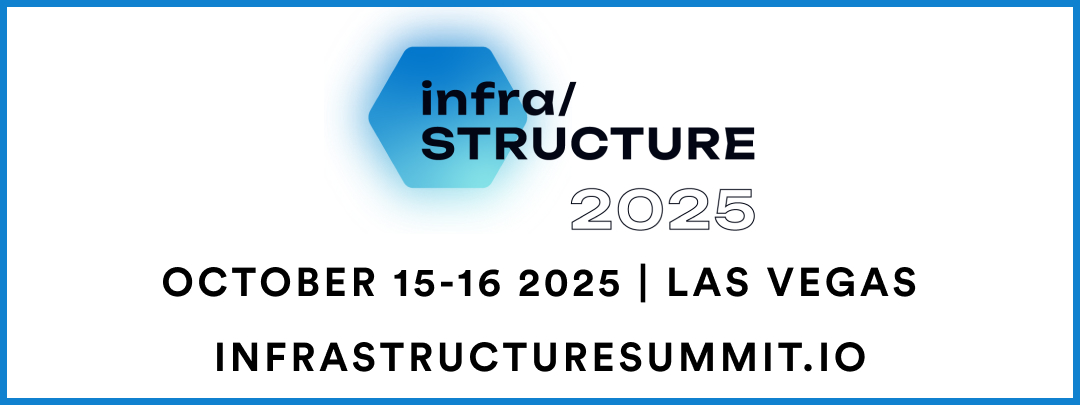WSS: Early returns from earnings season, ongoing strategic activity speak to trajectory of sector
The stretch run to the end of the year is underway as earnings season for the third quarter of the year has kicked off. We had a pretty busy week of coverage and will dive a bit deeper into the hyperscale cloud results next week, but the early signs are that growth in public cloud is accelerating and it is clear that AI is a significant driver. Google reported and saw a significant uptick in cloud revenue growth, while both Microsoft and the Azure business and AWS kept up the accelerated pace of growth that started a few quarters back.
Data centre colocation companies are no longer a big part of earnings season, with so many operators having been taken private in the past several years. But there are now cloud and colocation providers oriented to AI coming to the space from the cryptocurrency world and many are publicly listed. We are now tracking these companies very closely. We took a look at Soluna’s results coming from last quarter and Northern Data Group released its 3Q24 results. Other listed companies of this profile we are tracking now include Core Scientific, Applied Digital and Hut 8. Infrastructure revenue from these providers are relatively small, but things are starting to pick up pace. What has been interesting is that the operators in the business of both cloud and data centre colocation are reporting relatively evenly split revenue streams so far. That will probably change at some point, but right now, there seems to be plenty of demand for GPU-oriented cloud services that is landing on these platforms and not necessarily that of hyperscale clouds.
Picking up where we left off last week, the strategic landscape continues to see an elevated level of activity and there was another major transaction as DigitalBridge acquired hyperscale data centre operator Yondr Group. Yondr has a portfolio of hyperscale assets, along with plentiful land banks, that DigitalBridge will be keen to develop within the family. Yondr gives DigitalBridge more global reach and another operating platform that is focused on hyperscale and can easily translate into serving AI data centres. This transaction is about meeting the elevated demand profile of the sector.
There were other notable transactions across the ecosystem. HMC Capital acquired Global Switch’s Australian operations for $1.4b and Cologix raised $1.5b in debt and equity for further development and expansion. Meanwhile, on the cloud side, long-time sector investor Oakley Capital acquired Assured Data Protection. The rise of AI is also driving strategic activity. Earlier this year, we saw Eaton make some investments in infrastructure technology, and just this past week Schneider Electric acquired Motivair to enhance its liquid cooling and thermal management capabilities. As densities rise, the technology will have to change and evolve with it, and vendors are trying to get ahead of things and using M&A where necessary.
The trajectory for AI is not always going to move in a straight line. While supply chain issues coming out of the pandemic have smoothened out somewhat, the sheer scale and scope of demand continues to present challenges. A few months back, NVIDIA confirmed that the Blackwell series will not be shipped on schedule and will see a bit of a delay. AWS has now confirmed that it will be impacted by this as well. Despite the constraints, GPU-based cloud services continue to roll off the assembly line. Hut 8 recently launched a cluster in Chicago as it spins out a new GPU cloud infrastructure service, while Liquid Web released a new bare metal GPU service. There is also movement in the tools and services layer. DigitalOcean released a new partnership with Hugging Face that provides a PaaS tool for developers using its GPU cloud service to train, develop and deploy new models. And data centre capacity, of course, continues to be a hot commodity for the scaled GPU cloud providers like CoreWeave. CoreWeave just took its last option with Core Scientific and will lease around 500MW.
One of the ongoing challenges to the data centre colocation sector is the self-build (see our 2024 report on the hyperscale self-build market). Hyperscalers are now self-building more than ever before and this can impact colocation demand in a given market. The Columbus, Ohio area is known for hyperscale self-builds, but that has not stopped data centre colocation companies from entering the market and building out inventory. Vantage Data Centers is the latest operator to enter and will build a 192MW data centre in the New Albany area in very close proximity to some of these hyperscale self-builds. The fact is that hyperscalers can and will encounter issues around timing, capacity planning, power availability and overall predictability. Hyperscalers will look for overflow and bridge capacity at various points in time and colocation will be an option. it is also a good backup plan given all the various contingencies – many that are unforeseen – that can arise. What is happening in Ohio is a good example of how self-builds and colocation will co-exist and not just compete, but complement hyperscale data centre strategies.
There was also activity of note in Thailand. There are reports that ByteDance’s cloud infrastructure and e-commerce arm BytePlus is looking to set up in-country infrastructure in Thailand, while Equinix just confirmed plans to enter the market with a substantial investment (details to come next week). We recently published a detailed report on the Bangkok market and will present some of the findings at the upcoming W.Media event in Bangkok on November 14.
Finally, we published our monthly insights email this past week, which touches on some of these themes. in the past week, we looked at developments in nuclear energy, JV formation and GPU cloud provider expansions in colocation environments, along with global hyperscale cloud investments.
or



